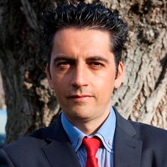Data Acquisition and Processing in Cultural Heritage
A special issue of ISPRS International Journal of Geo-Information (ISSN 2220-9964).
Deadline for manuscript submissions: closed (31 January 2019) | Viewed by 69525
Special Issue Editors
Interests: geomatics; remote sensing; geospatial data processing; change detection
Special Issues, Collections and Topics in MDPI journals
Interests: digital photogrammetry; HBIM; GIS; digital humanities; CH documentation
Special Issues, Collections and Topics in MDPI journals
Interests: photogrammetry; laser scanning; 3D modeling; topography; cartography
Special Issues, Collections and Topics in MDPI journals
Interests: close-range photogrammetry; architectural photogrammetry & laser scanning; mobile mapping systems and photogrammetric computer systems; integration and accuracy of data in 3D city and building models
Special Issues, Collections and Topics in MDPI journals
Special Issue Information
Dear Colleagues,
The increasing spread of digital techniques for Cultural Heritage with regards to recording, documentation, monitoring, representation, management and valorization by complex information systems, makes an extensive scientific discussion of the methods adopted for data acquisition and processing increasingly important.
Research innovations, new tools and best practices, both in terms of data capture and in their elaboration and modelling, can be shared and discussed to identify the most efficient and effective solutions in a rapidly-evolving sector. We believe that a wide spectrum of applications can benefit from this dialogue, allowing new studies and analyses and supporting better heritage knowledge and better conservation or restoration policies.
Aim of this Special Issue
This Special Issue aims to present and promote innovative concepts, technologies, methods, and tools in the acquisition and processing of metric and semantic data for Cultural Heritage applications, facilitating the dialogue in the Geomatics scientific community, and in relation to other related research fields, such as computer graphics, conservation, restoration and management of Cultural Heritage.
This Special Issue brings together scientists, developers and advanced users in 3D data acquisition, processing and visualization, aiming to encourage cooperation and practice sharing in the various fields where 3D technologies are nowadays used.
Topics
In line with the context and aims outlined above, we invite original research contributions on the following topics:
- Innovative techniques for range-based and image-based data acquisition and processing
- New developments in sensors and special devices for Cultural Heritage surveying and monitoring
- Advances in 3D modelling pipeline
- Device calibration for 3D data acquisition
- Automation of processes in sensor and multi-resolution data fusion
- Semantic classification of cloud points
- Innovative platforms for HBIM
- Database organization for HBIM
- Change detection procedures for Cultural Heritage
- Heritage monitoring by advanced remote sensed methods
- Quality evaluation and standards in Cultural Heritage recording and documentation
- Virtual and Augmented Reality for Cultural Heritage
Prof. Gabriele Bitelli
Prof. Fulvio Rinaudo
Prof. Diego Gonzalez-Aguilera
Prof. Pierre Grussenmeyer
Guest Editors
Manuscript Submission Information
Manuscripts should be submitted online at www.mdpi.com by registering and logging in to this website. Once you are registered, click here to go to the submission form. Manuscripts can be submitted until the deadline. All submissions that pass pre-check are peer-reviewed. Accepted papers will be published continuously in the journal (as soon as accepted) and will be listed together on the special issue website. Research articles, review articles as well as short communications are invited. For planned papers, a title and short abstract (about 100 words) can be sent to the Editorial Office for announcement on this website.
Submitted manuscripts should not have been published previously, nor be under consideration for publication elsewhere (except conference proceedings papers). All manuscripts are thoroughly refereed through a single-blind peer-review process. A guide for authors and other relevant information for submission of manuscripts is available on the Instructions for Authors page. ISPRS International Journal of Geo-Information is an international peer-reviewed open access monthly journal published by MDPI.
Please visit the Instructions for Authors page before submitting a manuscript. The Article Processing Charge (APC) for publication in this open access journal is 1700 CHF (Swiss Francs). Submitted papers should be well formatted and use good English. Authors may use MDPI's English editing service prior to publication or during author revisions.









